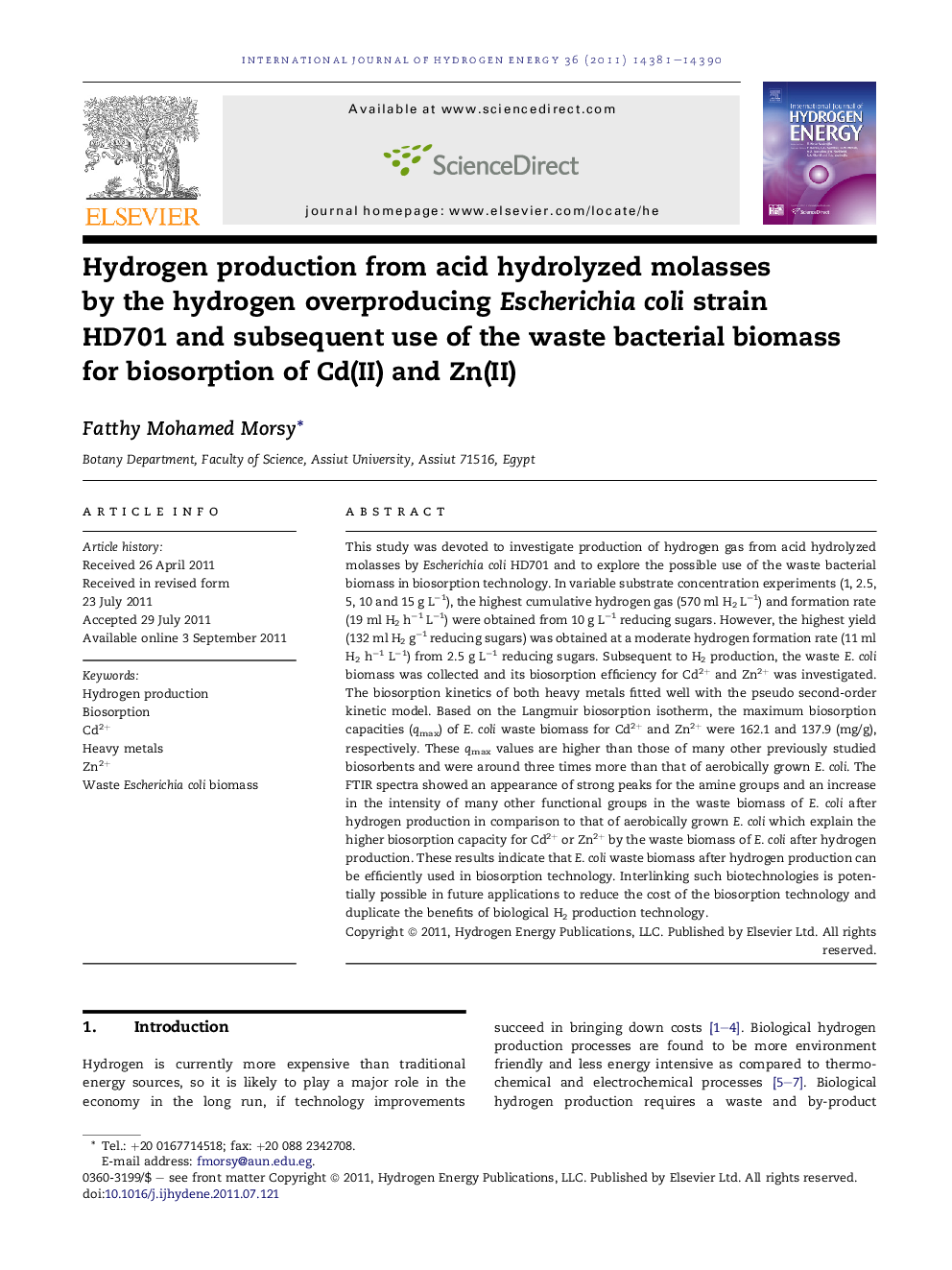| کد مقاله | کد نشریه | سال انتشار | مقاله انگلیسی | نسخه تمام متن |
|---|---|---|---|---|
| 1275645 | 1497571 | 2011 | 10 صفحه PDF | دانلود رایگان |

This study was devoted to investigate production of hydrogen gas from acid hydrolyzed molasses by Escherichia coli HD701 and to explore the possible use of the waste bacterial biomass in biosorption technology. In variable substrate concentration experiments (1, 2.5, 5, 10 and 15 g L−1), the highest cumulative hydrogen gas (570 ml H2 L−1) and formation rate (19 ml H2 h−1 L−1) were obtained from 10 g L−1 reducing sugars. However, the highest yield (132 ml H2 g−1 reducing sugars) was obtained at a moderate hydrogen formation rate (11 ml H2 h−1 L−1) from 2.5 g L−1 reducing sugars. Subsequent to H2 production, the waste E. coli biomass was collected and its biosorption efficiency for Cd2+ and Zn2+ was investigated. The biosorption kinetics of both heavy metals fitted well with the pseudo second-order kinetic model. Based on the Langmuir biosorption isotherm, the maximum biosorption capacities (qmax) of E. coli waste biomass for Cd2+ and Zn2+ were 162.1 and 137.9 (mg/g), respectively. These qmax values are higher than those of many other previously studied biosorbents and were around three times more than that of aerobically grown E. coli. The FTIR spectra showed an appearance of strong peaks for the amine groups and an increase in the intensity of many other functional groups in the waste biomass of E. coli after hydrogen production in comparison to that of aerobically grown E. coli which explain the higher biosorption capacity for Cd2+ or Zn2+ by the waste biomass of E. coli after hydrogen production. These results indicate that E. coli waste biomass after hydrogen production can be efficiently used in biosorption technology. Interlinking such biotechnologies is potentially possible in future applications to reduce the cost of the biosorption technology and duplicate the benefits of biological H2 production technology.
► The highest H2 yield by Escherichia coli was obtained at a moderate H2 formation rate.
► The waste E. coli biomass can be used as an efficient biosorbent for Cd2+ and Zn2+.
► The waste E. coli biomass was better than many other biosorbents for Cd2+ and Zn2+.
► The waste E. coli was better than aerobically grown E. coli for biosorption.
► Interlinking biosorption and H2 biotechnologies is possible in future applications.
Journal: International Journal of Hydrogen Energy - Volume 36, Issue 22, November 2011, Pages 14381–14390